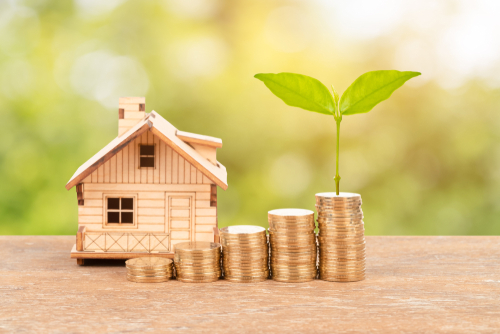 In the past, replacing a garage door or remodeling a bathroom or kitchen have been the go-to home improvements that have aided in increasing home value. While these improvements are still important and effective, a new player has emerged in the home-value-improvement game: energy-efficient upgrades!
In the past, replacing a garage door or remodeling a bathroom or kitchen have been the go-to home improvements that have aided in increasing home value. While these improvements are still important and effective, a new player has emerged in the home-value-improvement game: energy-efficient upgrades!
Improving the energy efficiency of your home benefits for both you and any possible future owners of your home. According to the Building Codes Assistance Project:
As you can see, there’s little doubt that energy efficiency is on people’s minds these days—especially when shopping for or evaluating a home. The question is, which energy-efficiency improvements offer the best return on investment for you, as both a homeowner and as a seller?
Let’s take a look at some of your best options.
Installing energy-efficient kitchen appliances may cost you up front, but the energy savings they deliver will offset that cost while improving your home’s resale value. New appliances typically look better, too, which improves kitchen aesthetics.
Insulation may not be the most popular area to focus your upgrading efforts on, but it really delivers where our home’s efficiency is concerned. Improved insulation not only keeps your energy bills lower, it also decreases demand on your heating and cooling systems, helping to lengthen their lifespan and reducing maintenance costs over their lifespan. Insulation is particularly important in your attic and basement—two areas from which conditioned air is likely to escape.
Ideally, the insulation in your home should meet or exceed recommended R-values for the region where you live. R-values are determined by the type of insulation, its thickness and its density, along with other factors. The higher the R-value, the more insulation it provides.
For a comprehensive explanation of R-values, insulation types and insulation basics—including the best places in your home to insulate—see the U.S. Department of Energy’s website.
When costs are considered, simple weatherstripping and caulking can be two of the best ways to increase the energy-efficiency value of your home. Simple and effective, these techniques offer quick returns on investment—often in one year or less. Caulk is generally used for cracks and openings between stationary house components such as around door and window frames, and weatherstripping is used to seal components that move, such as doors and operable windows.
To learn more about ways to detect air leaks, follow this link. A home energy audit—which typically includes a blower door test—can also be a worthwhile investment, helping you to identify (and ultimately fix) air leaks in your home.
Did you know that about 75% of the sunlight that enters your home gets trapped as heat? Planting tall shade trees will help reduce that solar gain, as well as your air conditioner’s cooling load and your summer energy bills alongside it. Also, consider this: According to the Arbor Day Foundation, a home’s value increases by 3% to 5% when it has a tree in its front yard, and houses with trees are preferred over houses without trees.
Today’s furnaces, boilers and water heaters are extremely efficient and reliable—and in most cases last longer than their older counterparts. By upgrading to new, high-efficiency heating equipment, you’ll save on energy use, improve heating performance, add warranty protection and give prospective buyers a positive feature to focus on in your home. Significant energy-efficiency incentives from state and federal programs take some of the sting out of investing in new equipment. Upgrades are worth your consideration, especially when you consider the rising costs of heating system repairs.
LED fixtures can reduce the electrical load needed to light your home at a relatively low cost. You won’t need to replace every light fixture in the home—simply choose the five most frequently used fixtures and replace them with ENERGY STAR®-rated models. New fixtures will also help refresh your interior.
Strategic replacement of old windows can add transformative natural light to your home while reducing your heating and cooling bills. Focus on windows where light matters most or where the existing windows provide poor insulation. If you choose to replace windows, invest in ENERGY STAR® upgrades to capture efficiency benefits.
When it comes to homes, the best improvements for resale are the ones that benefit you before you sell. Who knows? After you’ve finished adding energy-efficient home upgrades, you may decide you don’t even want to leave!
Want another way to make your home more efficient and appealing? Switch your electric or natural gas service to Discount Power! Enroll in one of our cost-effective plans today, or contact us to learn more about our Green Energy plans and more.